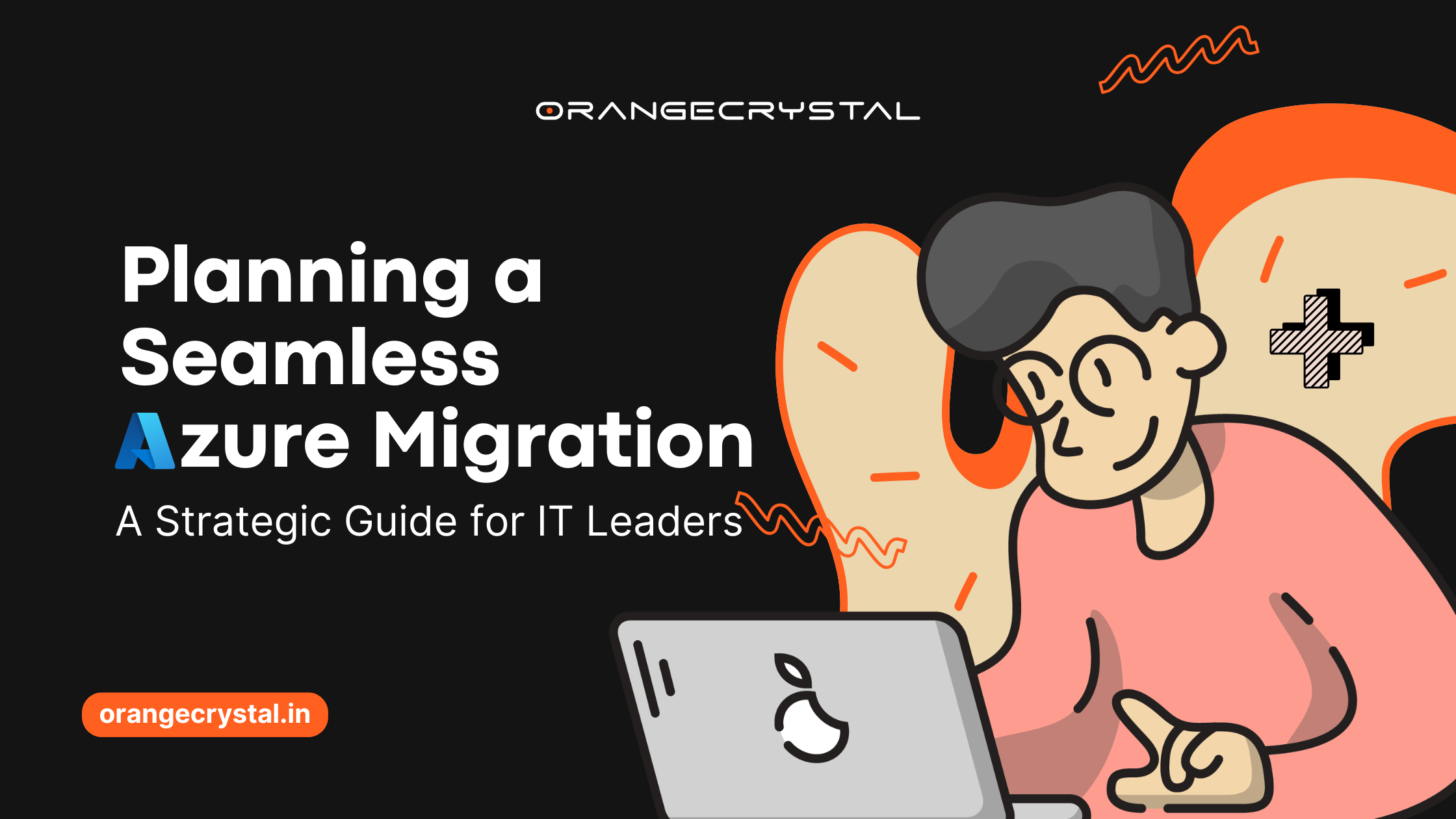How to Plan a Successful Azure Migration in Enterprise IT
As enterprises accelerate their digital transformation journeys, cloud adoption remains at the heart of modern IT strategy. For mid to large enterprises, Microsoft Azure has emerged as a preferred platform—offering agility, scalability, and integrated security.
Yet, the migration to Azure is more than a lift-and-shift operation; it is a strategic initiative that requires meticulous planning, stakeholder alignment, and technical precision.
A seamless Azure migration is both an operational challenge and a business-critical opportunity. This guide outlines the key considerations every enterprise IT leader should factor into a successful Azure migration plan.
1. Define Business Objectives and Cloud Strategy
Before any workloads are moved, it is essential to establish a clear cloud adoption strategy that aligns with business objectives. Is the goal to reduce infrastructure costs, improve availability, enhance disaster recovery, or enable rapid innovation?
Azure offers multiple service models (IaaS, PaaS, SaaS), and selecting the right mix depends on the organization’s application landscape and digital priorities. Begin by:
- Identifying quick wins (e.g., dev/test environments)
- Mapping mission-critical workloads
- Setting KPIs around performance, uptime, and cost-efficiency
Strategic alignment between IT and business units ensures the migration delivers tangible value—not just technical modernization.
2. Conduct a Detailed Assessment and Inventory
A comprehensive cloud readiness assessment is foundational. Use tools such as Azure Migrate to analyze your existing infrastructure, dependencies, and application behavior. Key assessment areas include:
- Server configurations and resource utilization
- Application dependencies and data flows
- Compliance, licensing, and data sovereignty requirements
This assessment not only informs the migration roadmap but also helps right-size Azure resources to avoid over-provisioning—delivering better cost control and optimized performance.
3. Choose the Right Migration Strategy (The 5 R’s)
Not all applications require the same migration approach. Microsoft outlines five key strategies often referred to as the “5 R’s”:
- Rehost (lift-and-shift): Minimal changes, fast deployment
- Refactor: Code changes to take advantage of PaaS features
- Rearchitect: Significant changes for scalability or modernization
- Rebuild: Full rebuild on Azure-native architecture
- Replace: Transition to SaaS alternatives
Each path has its own implications for timelines, risks, and long-term ROI. IT leaders must categorize workloads based on business criticality, technical feasibility, and modernization potential.
4. Address Security, Compliance, and Governance Early
Enterprises operate in complex regulatory environments. Azure provides a robust framework for enterprise-grade security, but configuration is key. Early decisions around:
- Identity and access management (IAM) using Azure Active Directory
- Role-based access control (RBAC)
- Encryption policies (data at rest and in transit)
- Compliance standards (GDPR, HIPAA, ISO 27001)
These are essential to mitigate risk and ensure a secure landing zone from day one.
Additionally, implementing Azure Policy and Blueprints can help enforce governance controls across subscriptions and resources, preventing configuration drift and ensuring ongoing compliance.
5. Plan for Hybrid and Multi-Cloud Integration
Most mid to large enterprises maintain a hybrid footprint. Azure’s capabilities like Azure Arc, ExpressRoute, and Azure Stack HCI enable seamless integration across on-premises, cloud, and edge environments.
If your organization is operating in a multi-cloud ecosystem, ensure interoperability with other platforms (e.g., AWS, Google Cloud) is considered—particularly for identity, networking, and data governance.
Use case:
A financial services enterprise leveraged Azure Arc to manage on-prem Kubernetes clusters and enforce consistent security policies across environments, reducing operational overhead and audit complexity.
6. Build a Scalable and Resilient Architecture
Architectural design on Azure should emphasize scalability, high availability, and disaster recovery. IT teams should:
- Utilize Availability Zones and Azure Load Balancer for fault tolerance
- Leverage Azure Site Recovery for business continuity
- Use autoscaling to optimize performance under varying loads
By building resilience into the design, enterprises can reduce downtime risk and improve service-level agreements (SLAs) with internal and external stakeholders.
7. Establish a Robust Migration Plan and Timeline
Migration must be executed in structured phases:
- Pilot/Test Migration: Start with non-critical workloads
- Wave Planning: Group workloads by complexity and dependencies
- Cutover Planning: Coordinate downtime windows and rollback scenarios
- Validation and Optimization: Conduct performance tuning post-migration
An incremental approach reduces operational disruption and ensures greater control. Change management, user training, and communications planning must also be part of the transition to avoid end-user friction.
8. Monitor, Optimize, and Iterate Post-Migration
Migration is not the end—it’s the beginning of a new operational paradigm. Leverage Azure’s native tools like:
- Azure Monitor
- Log Analytics
- Cost Management + Billing
To gain visibility into performance, costs, and usage patterns. Implement FinOps practices to monitor and control cloud expenditure continuously.
ROI Consideration:
Enterprises that actively optimize their Azure environments post-migration report 20–30% reduction in operational costs within the first year, while improving service availability and innovation cycles.
Final Thoughts
A successful Azure migration is equal parts technology, strategy, and execution. Navigating enterprise complexity, early planning, cross-functional collaboration, and a cloud-first mindset are key to realizing the full benefits of Azure.
Whether you’re migrating a single application or transforming an entire datacenter, success hinges on strategic planning and expert guidance.
Ready to Start Your Azure Migration Journey?
Our Azure specialists at OrangeCrystal have helped enterprises across industries migrate, modernize, and scale on Azure with confidence. Contact us today for a personalized consultation and discover how we can tailor a migration roadmap that aligns with your business goals.



Leave a Reply